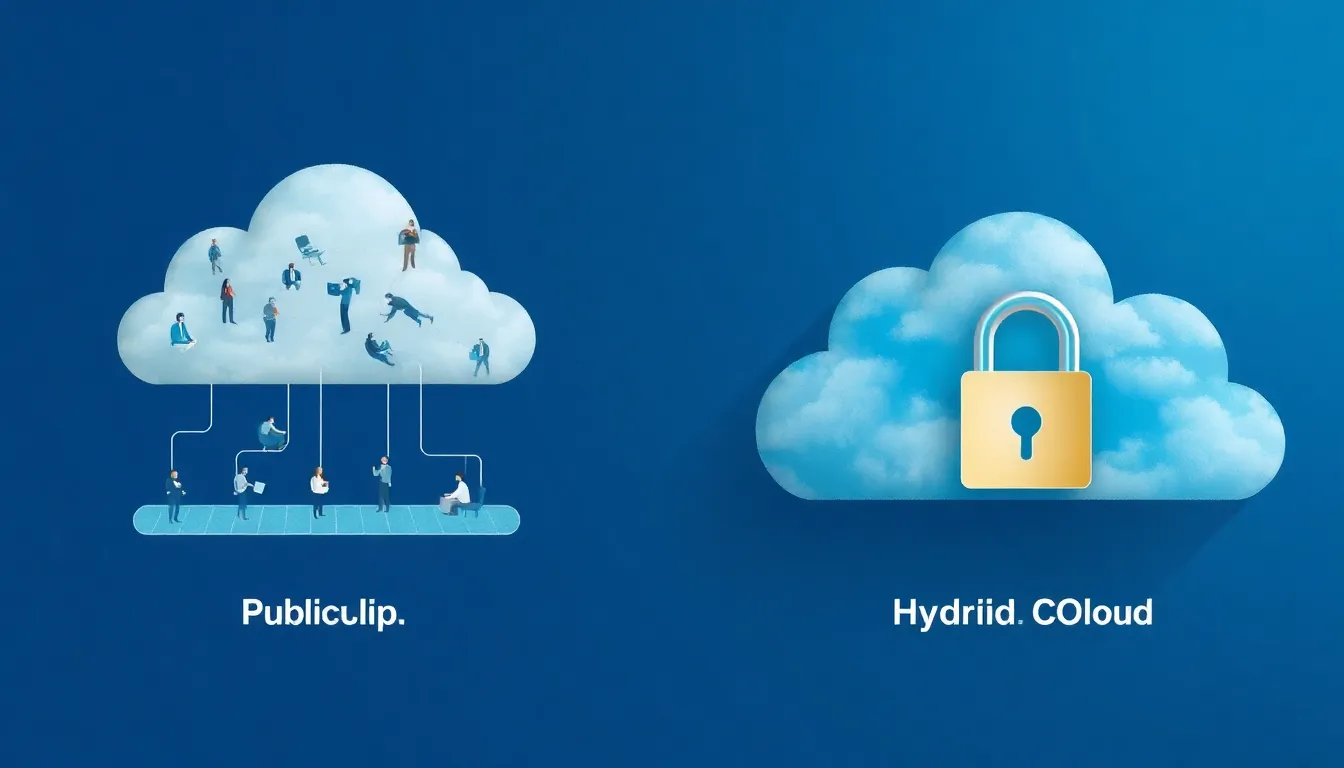Table of Contents
ToggleImagine a world where your files float effortlessly in the sky, accessible from anywhere with just a click. Welcome to the realm of cloud computing—a magical place where data lives in fluffy, digital clouds instead of dusty old servers. It’s like having a personal assistant who never forgets anything and can fetch your documents while you sip coffee on the beach.
What Is Cloud Computing?
Cloud computing allows users to store and access data over the internet instead of relying on local servers or personal computers. This technology enhances data management and accessibility for individuals and businesses alike.
Overview of Cloud Computing
Cloud computing provides on-demand availability of computing resources, including storage, processing power, and applications. Users benefit from cost-effective solutions since they pay only for the services they use. Various deployment models exist, such as public, private, and hybrid clouds, catering to different needs and preferences. Companies utilize cloud services to increase scalability and improve collaboration, enabling teams to work together efficiently from various locations.
Key Characteristics of Cloud Computing
Cloud computing possesses several defining attributes. First, scalability allows users to adjust resources based on demand, accommodating fluctuations easily. Second, accessibility ensures that users can retrieve data and applications from any location with an internet connection. Third, flexibility supports the integration of diverse service types, such as Software as a Service (SaaS) and Infrastructure as a Service (IaaS). Lastly, security measures often include encryption and access controls, safeguarding sensitive information in the cloud.
Types of Cloud Computing

Cloud computing encompasses several models designed to meet diverse needs. Each type offers unique advantages and opportunities for users.
Public Cloud
Public clouds provide resources and services to multiple clients over the internet. Companies like Amazon Web Services (AWS) and Microsoft Azure dominate this market. Users benefit from cost efficiency, as they share infrastructure with others. Scalability remains a key feature, allowing businesses to quickly adjust resources according to demand. This model is ideal for applications with variable workloads, giving startups and enterprises flexibility.
Private Cloud
Private clouds offer a dedicated infrastructure for a single organization. This model enhances security and control over sensitive data. Many large enterprises prefer private clouds due to compliance and regulatory concerns. Organizations can customize their infrastructure and software according to specific needs. Additionally, private clouds improve performance, ensuring that resources are solely available for the organization’s use.
Hybrid Cloud
Hybrid clouds combine public and private cloud components, providing versatility. This model allows organizations to choose where to host their applications and data. Businesses can keep sensitive workloads in a private cloud while leveraging public clouds for less critical tasks. Improved flexibility aids in optimizing costs and resources. Hybrid clouds encourage seamless integration, enabling organizations to benefit from both environments.
Benefits of Cloud Computing
Cloud computing offers numerous advantages that significantly enhance user experience and operational efficiency. Key benefits include cost efficiency, scalability, and flexibility.
Cost Efficiency
Cloud computing reduces capital expenses by eliminating the need for extensive physical infrastructure. Organizations pay for only the resources they use, making budgeting straightforward and predictable. This pay-as-you-go model allows for reallocation of funds towards other strategic initiatives. For example, small businesses can access high-end resources without large upfront costs. Additionally, cloud providers typically manage maintenance and updates, freeing users from these responsibilities and reducing IT overhead.
Scalability and Flexibility
Scalability remains a fundamental advantage of cloud computing. Resources can be adjusted on demand to meet varying operational needs. Businesses experiencing fluctuating workloads can seamlessly increase or decrease their resources without significant downtime. Flexibility allows organizations to deploy applications quickly. Teams can integrate various tools and technologies easily, promoting efficient workflows. This adaptability supports diverse business models and speeds up time-to-market for new products and services.
Cloud Computing Definition in Different Contexts
Cloud computing encompasses various definitions that apply to technical and business environments. Each context highlights different aspects of this innovative technology.
Technical Definition
Cloud computing refers to on-demand delivery of IT resources via the internet. It involves virtualized computing power, storage, and applications. Instead of relying solely on local servers, users access these resources through cloud service providers like AWS and Google Cloud. This model supports real-time data management and processing, enhancing efficiency. Scalability remains a key feature, allowing users to effortlessly adjust resources based on current demands. Security measures, including encryption and multi-factor authentication, further protect sensitive data stored in the cloud.
Business Definition
In a business context, cloud computing represents a strategic solution for improving operations and reducing costs. Organizations leverage cloud services to enable remote access to applications and data. This flexibility fosters collaboration among teams regardless of their physical location. Companies benefit from the pay-as-you-go pricing model, enabling them to only spend on resources in use. Efficient resource allocation contributes to enhanced productivity and faster deployment of new services. Overall, cloud computing supports agile business models, helping organizations adapt swiftly to changing market conditions.
Cloud computing stands as a pivotal force in today’s digital landscape. Its ability to provide scalable and flexible solutions has transformed how individuals and businesses manage their data. With various deployment models available users can choose the best fit for their needs whether it’s the cost-effective public cloud or the secure private cloud. The advantages of cloud computing extend beyond just storage and processing power; they encompass enhanced collaboration and operational efficiency. As technology continues to evolve organizations that embrace cloud solutions will find themselves better equipped to navigate the complexities of modern business challenges.





